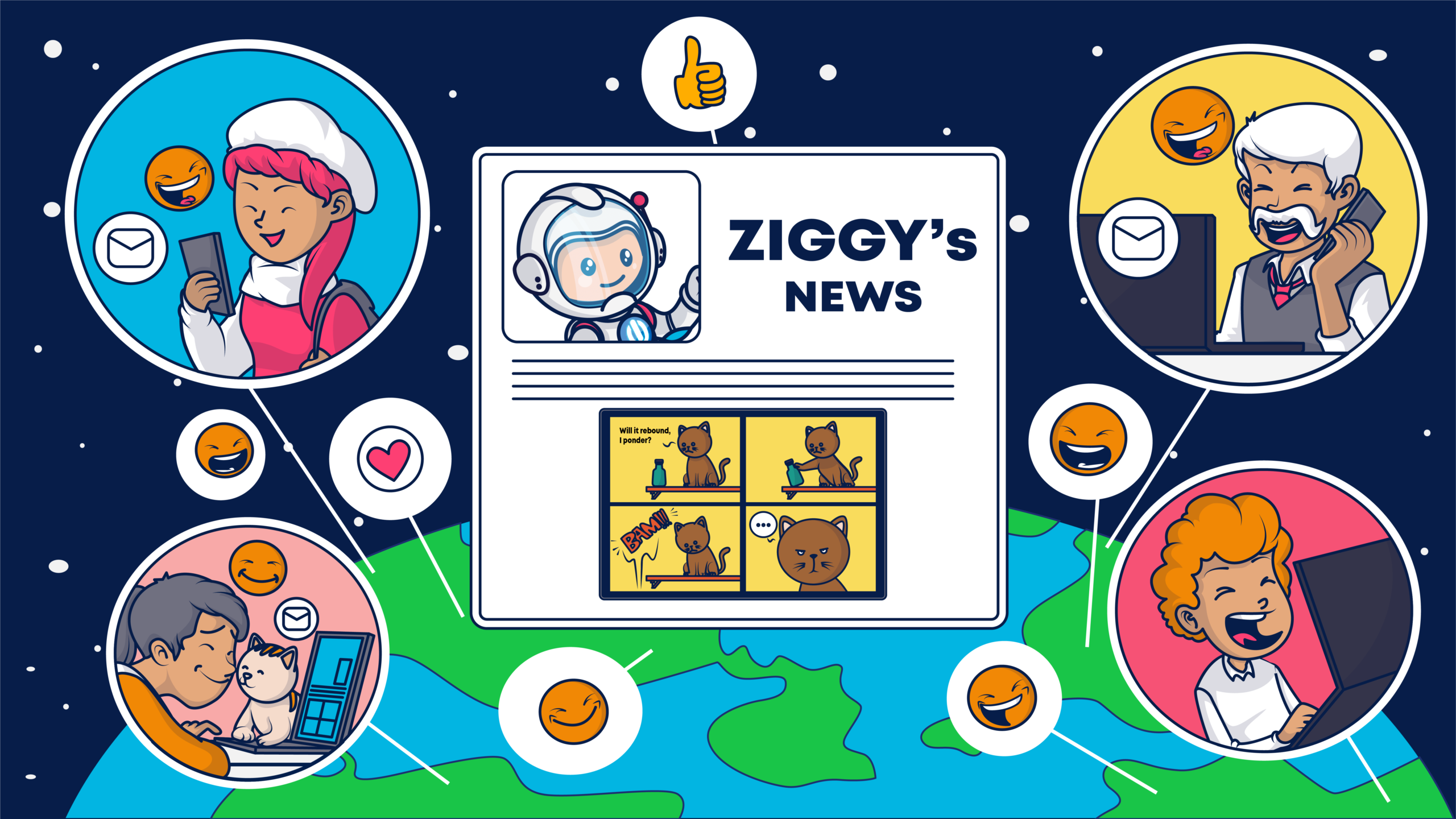Advertising in email, it is worth its salt? Will it provide revenue or act as a distraction to your subscribers? We asked email marketing experts; Tim Watson, PowerInbox, SiteMath, Ryan Phelan, Pepipost, NiftyImages, Mailjet, Liveclicker and Jordie van Rijn for their opinions and tips when including ads within email campaigns. More specifically, we asked them:
“What’s your expert advice for Effectively Using Advertising in Email Marketing?”
 Jordie van Rijn, email expert and founder of www.emailvendorselection.com:
Jordie van Rijn, email expert and founder of www.emailvendorselection.com:
I’ll start with a different angle here and talk about the strategy behind email ads.
Today, every company is a media company, whether you realize it or not. Think of the space in your own emails as “an engagement opportunity”. It’s an asset.
Take retail for instance, say supermarkets and hardware stores. In price negotiations with suppliers they do package deals including media – door to door flyers, TV-Ads, shelf space, in store promotions (!) and… their email. They have been doing this for ages.
A part of business innovation comes from creating opportunities and shifting the way you look at your business assets and resources. Email monetization impacts many different aspects of your business.
Say that instead of subscriber acquisition being a cost center, they are now (on average) a positive revenue source – even if people are not buying your own, main product (yet). That opens a lot of possibilities for scaling your audience and reach. When we started with the guide for ecommerce email marketing, this is something I really wanted to add, because when done well, it can turn around your whole email marketing strategy for the better.
Monetizing email real estate is smart. The better, more exclusive, or promising the audience and AD space, the more it is worth. It’s a use-it-or-lose it deal. The value is created the moment the email is sent – and it’s not coming back afterwards.
Some of the questions you’d want to answer:
- What space do you want or have to offer?
- How much do you want to pay / earn? And in which form?
- What works very well for both the publisher and advertiser?
Email advertising doesn’t always mean an out of pocket investment or cash revenue stream. You might want to barter or do joint promotions. That makes it effective also for smaller companies with smaller audiences. Or you can help out partners / affiliates with content in return for exposure.
About Jordie: Jordie van Rijn is an email marketing expert, and one of the few “original thought” leaders in the Marketing and MarTech industry. He is the founder of the international platform for Email and Marketing Automation Software selection www.emailvendorselection.com.
 Gretchen Scheiman, Senior Director of Marketing at Liveclicker:
Gretchen Scheiman, Senior Director of Marketing at Liveclicker:
Email advertising is one of the most valuable components of the marketer’s toolkit, and that means we’re always looking for new ways to really connect with customers and drive revenue.
A recent report from The Relevancy Group shows that advanced personalization tactics can drive 17% more revenue than basic personalization – when they are done right. But that means the easy stuff, like [FIRSTNAME] tags and individualized subject lines, aren’t enough anymore.
Product recommendations are a start, but to get really strong results marketers need to look for real-time dynamic content that adapts to a subscriber’s profile, behavior, preferences, and environment at the moment of open.
The beauty of this approach is twofold. First, more relevant emails provide a better experience, develop customer relationships, and drive a huge positive impact on your bottom line. Second, these capabilities are easier than marketers realize to implement and automate. This makes them extremely budget friendly and an option for resource-stretched teams.
What form that advanced personalization takes will depend on your audience, your industry, and your goals. Consider a few powerful use cases for email advertising:
- Implement dynamic images capable of adapting after your emails have been sent and adjust them in real-time to feature different products and sales based on inventory levels
- Add a personalized coupon to create a sense of urgency and immediate conversions
- Include a helpful ‘Add to Calendar’ button that will then send an event reminder from the subscriber’s calendar app
These are just a few examples of ways marketers can get creative with email advertising. Brands that are pushing forward with real-time personalization are seeing tremendous results.
About Gretchen: Gretchen Scheiman serves as Liveclicker’s Senior Director of Marketing. She is fortunate to work with an amazingly talented team to build and manage a growth engine across all levels of the marketing funnel, for an innovative global brand.
 Beatriz Redondo Tejedor, Head of Content at Mailjet:
Beatriz Redondo Tejedor, Head of Content at Mailjet:
The key to effective advertising in email marketing is to think, first and foremost, about how this will fit into your overall email marketing strategy. As with anything you send to your contact list, email advertising will be effective if, and only if, it adds value.
But what does value mean when we’re talking about email marketing? Think about what your contacts are looking for when they sign up to your newsletter or mailing list. When your subscribers give you their consent, they’re expressing an interest on something in particular. Whether you promised exclusive offers, product tutorials or curated content, your contacts have joined because that’s what they want to get from you. That’s value.
Adding advertising to your marketing emails can be a great way to monetize your email program, but can put your email strategy and email deliverability at risk if not done properly. Flood your contact’s inbox with ads that add no value, and you might see your open rates decrease and your unsubscribes spike.
So how can you know if your email advertising adds value?
- Make sure it’s relevant. Don’t just think about whether the product or services you advertise will be of interest to your mutual audience. Always keep in mind you’re also promoting a brand, and ensure its brand values and ethos represent your business too.
- Make sure it’s personalized. Segment your newsletters to effectively target your contacts with the right advertising or, even better, use dynamic content to truly personalize the ads based on your users’ past behavior and preferences.
- Make sure you keep an eye on the metrics. The only way to really know if your email advertising is adding value is to monitor how your users interact with it.
Ensuring your email advertising offers value to your audience is the best way to protect your email program and make this a profitable strategy.
About Beatriz: Beatriz Redondo Tejedor is the Head of Content at Mailjet, the email platform for fast-moving teams. Beatriz leads a team of content writers that aim to educate the community on how to make the most of their email programs and integrate emailing into their overall marketing strategies.
 Eric Elliott, Director of Business Development with NiftyImages:
Eric Elliott, Director of Business Development with NiftyImages:
In order to use advertising effectively in email, relevancy is the key. Utilizing any and all subscriber data that you have access to will increase ROI and engagement on your and your partner’s email ads. Today’s marketers have access to so much data (customer profiles, site data, email data, purchase history, website behavior, etc.), yet this data is rarely used to personalize the subscriber’s ad experience.
By harnessing the data of your subscribers you can now send hyper personalized content that is unique and relevant to each person.
Personalized Advertisement Examples Driven by Data:
- Show real-time upgrade options for an upcoming flight, display live rental car inventory for an upcoming booked vacation, or recommend activities in the destination city
- Display images and content of on-site browsing history, replace ad segments as soon as they become out of stock or irrelevant, show suggested or complimentary ads based on purchase history
- Use real-time reward points to push relevant partner offers to different customer tiers
By leveraging your customer data, you can make real time decisions on what partner content and images should be displayed. Real-Time personalized content will resonate with the subscriber and they will be more likely to engage in your email ads, versus a static offer. In the end, it’s all about delivering a personal experience to your subscribers so they feel appreciated and connected to your brand, including relevant advertising.
About Eric: Over the past 13 years, Eric has successfully worked with some of the biggest online brands in the world from Pitney Bowes, Adidas, McDonalds and Salesforce. An experienced and versatile technology professional, Eric’s been helping align client’s email marketing goals with the appropriate technology to build successful relationships.
 Ryan Phelan, Co-Founder of Origin Email Agency:
Ryan Phelan, Co-Founder of Origin Email Agency:
Adding advertising to your email marketing program can be a great way to monetize your email program, maybe help pay to update your template, fund a new triggered email or even justify your existence.
But, before you dive in, think long and hard about the pros and cons. Then, think again.
Don’t think of in-email advertising as the pot of gold at the rainbow’s end. It’s more important to think about whether those messages are relevant. Are they going to benefit your end users as well as your bottom line?
Before you sign up with an advertising program, keep these ideas in mind.
- Make sure you can control what goes in that ad module in your email.
It must align with your brand standards and equity and serve your customers. Never allow anything in your emails that you don’t control. - Track your email performance.
Watch activity (opens, clicks, conversions) to detect any decline in engagement. Set up a control group to see whether the ads might be a factor. - Watch the ad content.
Any ads in your email messages should enhance and add to your message, not replace. Make sure the ad doesn’t outshine your own content.
Advertising in email might seem like a simple decision, but it isn’t. It’s right up there with the most important decisions you have to make about your email program and strategy. Making a mistake can cost you your subscribers, and without your subscribers, you have nothing.
About Ryan: Ryan brings nearly two decades of global online marketing experience to Origin Email Agency focusing on driving GTM strategies for high growth SaaS software and Fortune 250 companies. Ryan is a respected thought leader and nationally distinguished speaker with a history of experience from Adestra, Acxiom, BlueHornet, Sears Holdings, Responsys and infoUSA.
 Chaitanya Chinta, Global Head of Email Business at Pepipost:
Chaitanya Chinta, Global Head of Email Business at Pepipost:
Email is the most preferred channel of communication between brands and its customers and the channel with amazing ROI (60% of the customers prefer brands contact them via email and for every dollar spent on email, brands see a $38-40 in return). Advertising in email is a way to increment the ROI further.
However, it’s tricky to target email ads effectively – primarily because of Gmail’s caching of images. Since there’s limited information available to the ad-server or ad-network, the targeting is relatively limited than a regular display ad.
Email advertising only works well if the recipients find the ad relevant. Publishers should show complimentary ads to their core offering. If a brand sells women’s clothing, showing an ad of accessories or beauty products makes it complementary. An auto parts ad could be out of place. For brands that don’t sell, like news publishing portals, ads can be segmented based on user behavior.
Make sure you use your real-estate wisely.
Do not overcrowd the mailer with only ads. Remember that the user is opening the email for content and if it’s overcrowded with ads, the user will lose interest in the mailer. Gather feedback periodically to improve your ad program. Give an option to unsubscribe only from ads and not the newsletter itself. Users who are not interested in ads, but in the content can choose to stay with the brand instead of unsubscribing totally.
Email is the only unwalled open platform when it comes to digital ads. Wise utilization of this platform is a win-win for both the advertiser and the brand.
About Chaitanya: My love for email started in 2005. I was writing spam filters for United Online (Netzero & Juno) back then. After fighting spam for 6 years, I moved to Zeta Global (Zeta Interactive then) to lead Deliverability there before co-founding Pepipost in 2015. Once Netcore acquired Pepipost, I became the Global Head of Email Business at Netcore.
 Jeff Kupietzky, CEO of PowerInbox:
Jeff Kupietzky, CEO of PowerInbox:
Email advertising is incredibly effective for adding a new revenue stream. When done right, your email campaigns can essentially pay for themselves, and then some. One of the reasons it works so well is the notion of conveyed trust. When subscribers trust you, the publisher, that trust is conveyed to the advertisers who place ads within your emails. In fact, trust in the publisher is the #1 reason email subscribers open and read e-newsletters, outranking the content itself in importance.
Not only do they open and read, but that conveyed trust also drives them to take action. Two thirds of subscribers click on ads in an email if they trust the sender. That means you get the revenue you need, and your advertisers get the traffic they want. It’s a win-win.
To be most effective, email advertising must have a few key ingredients.
- It must be relevant. The content advertisers deliver must be relevant to your mutual audience, and it must be in line with your brand image and what they’d expect from your company.
- It must be targeted. Using the email address as a unique identifier, you can deliver precisely targeted ads to each subscriber based on their known preferences and behavior.
- Choose partners wisely. Publishers must be mindful of the ad partners they work with to maintain trust. That’s why it helps to bring in an email advertising platform provider to serve as a matchmaker between you and your advertisers. As the engine behind your email advertising, the platform provider can ensure your subscribers see the most relevant, targeted content.
About Jeff: Prior to PowerInbox, Jeff was President & CEO at Oversee.net and served in leadership positions with X1 Technologies, Digital Insight, Siebel Systems, and Loudcloud/Opsware. A frequent speaker at Digital Media conferences, he has also been featured on CNN & CNBC. Jeff earned an MBA Harvard Business School and his B.A. in Economics from Columbia University.
 Mike Lynn, CTO of SiteMath:
Mike Lynn, CTO of SiteMath:
At SiteMath we know that relevancy and engagement is key to advertising in email. If users aren’t engaging with the emails you send then you won’t have great delivery. One way to help with engagement is to have valuable content and relevant ads that your audience will want so knowing what your users are interested in is a good first step.
- Segment your lists and overlay additional data – Sending the same ad to your entire list isn’t as effective as it used to be. You should be working with a machine learning engineer and a data scientist to model out your sending. Key data features are complainers, opt outs, and what types of ads users respond and convert on.
- Back off quickly with non responsive (not opening/clicking) users – Every ISP is different but Gmail’s inbox will punish you if you’re hitting users who aren’t regularly opening your emails.
- Send some emails without advertising – This tends to help with IP reputation.
- Test your creatives – Having good email creative designs is also something that could help with engagement. At SiteMath we make sure our creatives are responsive in every email client and have mobile user-friendly content. You want to be able to catch the users attention with easy to read copy, clear CTA’s and an image that fits the screen the user is reading it on.
About Mike: Mike Lynn has been involved with email since 1999 and is the CTO of SiteMath.
 Tim Watson, Founder of Zettasphere:
Tim Watson, Founder of Zettasphere:
Providing free content and supporting it with Ads is a well-worn and successful business model. Much of commercial TV is paid for by Ads.
No surprise the model works for email too. If you’ve a large and engaged audience, adding Ads to your newsletter generates a new revenue stream.
The simplest example is adding some content promoting a sister or partner brand offer. To be effective email adverts must be relevant. But because matching advertisers to email audiences and scaling this up takes a lot of effort, the best route is to use platforms like LiveIntent and Powerinbox. These are like Google Ads for email.
But it doesn’t make sense for everyone.
If you’re emails are about promoting your brand and your products, then adding adverts is probably the wrong thing for you. Stay focused on promoting your products, rather than distract your audience with adverts that are of lower revenue value to you. On average people click 1.5 links in an email. That means once they click, they’re gone. Focus the click on your key purpose.
Ads in email are perfect if your publishing free content. Publishers of daily news, horoscopes or bloggers. If you put Ads on your landing pages, then it’s likely you should be adding Ads to your emails.
About Tim: Tim’s an email marketing consultant and international speaker who’s been invited to present at conferences in over half a dozen countries. Because of his analytical background Tim has a firm focus proving what works in email – not assuming. Mostly he’s deep in email strategy, advising brands from start-ups to enterprises how to boost their email marketing results.
Summary
So to summarize, Jordie van Rijn’s top tip is about considering the space of your emails as “an engagement opportunity”, you either use it or lose it. However, do so with caution, as email advertising doesn’t always mean an out of pocket investment or cash revenue stream.
Jeff Kupietzky from PowerInbox shared interesting stats such as two-thirds of subscribers click on ads in an email if they trust the sender. Their top three tips are:
- Be relevant,
- Targeted and
- Choose partners wisely
There are additional data nuggets that can be overlayed on top of your segmented lists as highlighted by Mike Lynn at SiteMath. Gretchen Scheiman from Liveclicker shared that it’s vital to utilize real-time dynamic content that adapts to a subscriber’s profile, behavior, preferences and the environment at the moment of open.
Chaitanya Chinta from Netcore explained that “email advertising only works well if the recipients find the ad relevant, use the real-estate wisely. Don’t overcrowd the space with ads; otherwise you’ll lose interest. Eric Elliott from NiftyImages shared with us several personalized data-driven examples from displaying real-time flight information, reward points and purchase history. Beatriz from Mailjet added that the focus should be on value – think about what your contacts are looking for when they sign up to your mailing list.
Ryan Phelan from Origin Email provided his top tip “before you dive in, think long and hard about the pros and cons” and then think again! And Tim Watson’s top tip is to retain your focus on the key purpose of your email. Email advertisements may not be suitable for your business, so review carefully.
So there we have it, our email experts and their tips on how to effectively incorporate email advertising in your email strategy.
For other email marketing insights, check out our blog and our previous experts blog.





 Jordie van Rijn, email expert and founder of
Jordie van Rijn, email expert and founder of 
 Gretchen Scheiman, Senior Director of Marketing at
Gretchen Scheiman, Senior Director of Marketing at 

 Beatriz Redondo Tejedor, Head of Content at
Beatriz Redondo Tejedor, Head of Content at  Eric Elliott, Director of Business Development with
Eric Elliott, Director of Business Development with  Ryan Phelan, Co-Founder of
Ryan Phelan, Co-Founder of  Chaitanya Chinta, Global Head of Email Business at
Chaitanya Chinta, Global Head of Email Business at  Jeff Kupietzky, CEO of
Jeff Kupietzky, CEO of  Mike Lynn, CTO of
Mike Lynn, CTO of  Tim Watson, Founder of
Tim Watson, Founder of 









